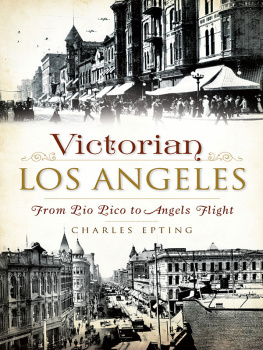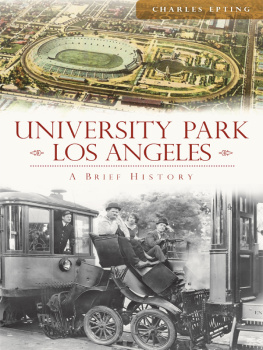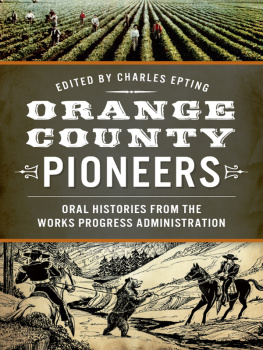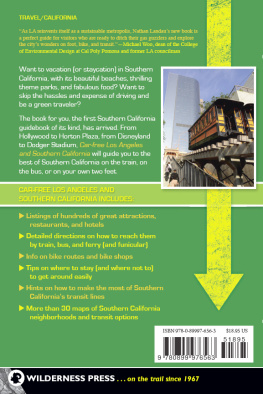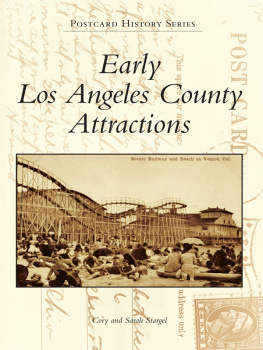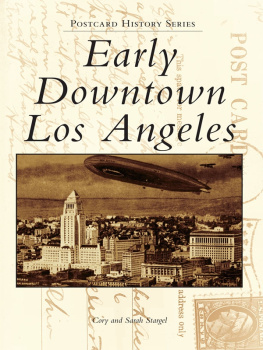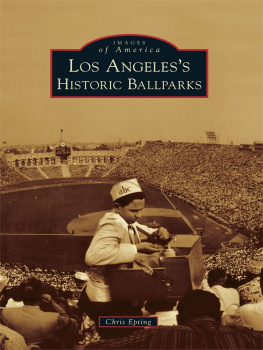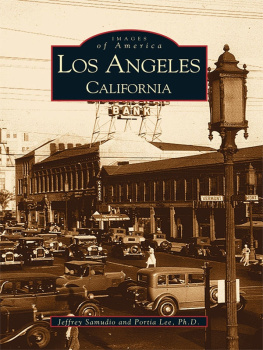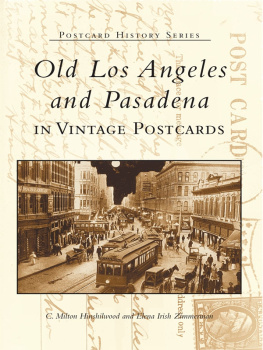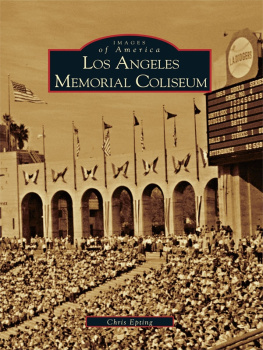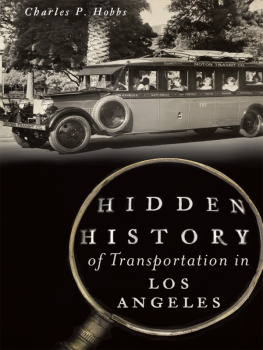


Published by The History Press
Charleston, SC 29403
www.historypress.net
Copyright 2015 by Charles Epting
All rights reserved
First published 2015
e-book edition 2015
ISBN 978.1.62585.143.7
Library of Congress Control Number: 2014958799
print edition ISBN 978.1.62619.608.7
Notice: The information in this book is true and complete to the best of our knowledge. It is offered without guarantee on the part of the author or The History Press. The author and The History Press disclaim all liability in connection with the use of this book.
All rights reserved. No part of this book may be reproduced or transmitted in any form whatsoever without prior written permission from the publisher except in the case of brief quotations embodied in critical articles and reviews.
This book is dedicated to my brothers in the Beta Tau Chapter of Theta Chi Fraternity.
Stand fast, stand firm, stand sure, stand true.
Harrison Gray Otis (18371917), Publisher, Los Angeles Times
CONTENTS
PREFACE
Victorian Los Angeles may be something of a misnomeror, at the very least, a title that is practically undefinable. The Victorian era is a historical concept that has both a literal and a colloquial definition. Queen Victoria herself, for whom the ubiquitous era is named, ruled from 1837 to 1901; therefore, a technical definition of the Victorian era would encompass only those years.
However, ask most people to think of a Victorian house or Victorian clothing, and certain images will come to mind, regardless of specific dates. This is the connotative definition of the Victorian erathings that we have come to associate with the reign of Victoria through popular depictions of the era. Plenty of Victorian-style homes, for example, were constructed after 1901, and many men continued to wear top hats past that date despite their association with the Victorian era.
When I began to research this book, I was unsure which approach I was going to take. The first major problem I came across was the futility of trying to apply the technical dates of the Victorian era to any aspect of American historyparticularly somewhere so far removed from the Crown as Los Angeles. The dates 1837 and 1901 are completely arbitrary confines to place on California, as Victorias ascension to the throne and death had little to no impact on the daily lives of people in Los Angeles.
At the same time, Los Angeless period of traditionally Victorian architecture was extremely short-lived; likewise, the citys history as a Wild West town prevented Los Angeles from embracing Victorian societal norms to the extent that other large American cities did. To therefore focus exclusively on the stereotypically Victorian aspects of Los Angeles would not have provided a compelling historical narrative.
The approach I took for this book is somewhere between the two ends of the spectrum. The temporal range of this book is, roughly, 1837 to 1901; however, significant events that occurred before or after these dates have not been excluded because of an arbitrary technicality. Within those years, I have paid special attention to the more typical aspects of Victorian culture as it is perceived todayQueen Anne architecture, pleasure gardens and high society.
As it turned out, the confines of 1837 to 1901 worked remarkably well for Los Angeles. In the late 1830s and early 1840s, the city was experiencing the last vestiges of its Mexican Period as the stage was being set for war. Conflict finally arrived in 1846, only nine years after Victorias reign began.
More important, though, is what coincided with the end of the Victorian era. Within about a decade on either side of 1901, three major events changed Los Angeles immeasurably. First, Edward Doheny discovered oil in 1892, and this revolutionized Los Angeless economy and brought a new prominence to the fledgling city. Second, the year 1910 saw the birth of the movie industry in Hollywood with the filming of D.W. Griffiths In Old California. Lastly, in 1913, the Los Angeles Aqueduct was completed, providing Los Angeles with the necessary infrastructure to develop into a true metropolis.
The occurrence of all three of these events within a relatively short period represented a marked shift in the history of the city. Construction increased exponentially, and many buildings from the nineteenth century were deemed antiquated and demolished. The demographics of the city changed rapidly. Almost overnight, a city that had been the same for more than half a centuryin essence, if not in actualitywas transformed.
Most of downtowns landmarks, from the Art Deco city hall to Graumans Million Dollar Theater to the Central Branch of the Los Angeles Public Library, are a direct result of this shift during the first decades of the twentieth century. For most residents, these buildings are representative of Los Angeless history, as (with very few exceptions) there is simply nothing older than them left. Although undoubtedly historic, these buildings represent only a small slice of Los Angeless history and do not come close to telling the whole story.
A typical example of this phenomenonthe new Los Angeles eclipsing the oldcan be seen with the downtown Los Angeles Public Library. Threatened with demolition in 1978, the librarys preservation was ensured by the formation of the Los Angeles Conservancy, which has since continued to fight for particular buildings throughout the county.
Today, the public library is heralded as one of the most impressive success stories of the preservationist movement in Los Angeles and serves as a model for other such initiatives. It is an age-old talenew development threatens the historic and cultural fabric of a community, and the members of said community band together to protect their collective past. Grass-roots activism prevails and everyone is happy.
However, few people realize that the Central Library was, at one time, a modern development itself. Since 1882, the site had been occupied by the State Normal School, the forerunner to the University of CaliforniaLos Angeles (UCLA). With its Gothic architecture that impressed passers-by with arched windows and decorative pinnacles, the State Normal School was a stalwart of the Los Angeles skyline for several decades.
I often wonder what public response was like when the school was demolished to make way for the modern public library, whose architecture combined exotic influences from Byzantine, Egyptian and Spanish traditions. I would be shocked if there werent certain old-fashioned types who resented the radical and revolutionary building replacing their beloved Victorian architecturemuch in the same way that the Los Angeles Conservancy would have resented a modern high-rise replacing the beloved library.
History is in the eye of the beholder, but when all one can see are products of the twentieth century, it is difficult to contextualize the history of a city as large as Los Angeles. This book is intended to fill in that gap that is so underrepresented todaythe Los Angeles that we can only see through scattered remains across the county.
Covering more than sixty years of history in a city as large as Los Angeles is no easy task, and much longer books have been written on much more specific topics than this one. Therefore, this book should not be thought of as exhaustive or comprehensive by any means; instead, I have tried to give a representative sample of what the city was like during the nineteenth century. For example, there are dozens, if not hundreds, of Queen Anne/Victorian homes that easily could have been included in this book because of their architectural or historic merit.
Next page
